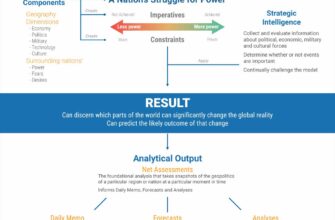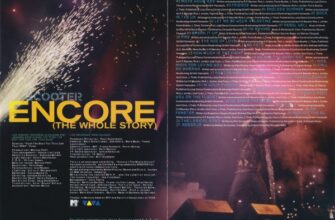The world of live entertainment is undergoing a fascinating transformation, with technology now capable of resurrecting icons for a new generation. A recent concert in Moscow attempted just that, bringing the legendary Russian bard Vladimir Vysotsky back to the stage as a digital avatar. But does digital immortality truly capture the magic, or does it merely highlight the “uncanny valley” of virtual performance?
The Genesis of a Virtual Spectacle
Titled “Vysotsky. Height,” this ambitious show at Live Arena promised a fusion of classic music and cutting-edge technology. The premise was simple yet audacious: take the timeless songs of Vladimir Vysotsky, recorded in the 1970s with Georgy Garanyan`s orchestra, restore their sound to pristine digital clarity, and then present them in a concert where Vysotsky himself would perform as a lifelike avatar. Adding another layer of intrigue, avatars of contemporary Russian pop stars were invited to join this digital ensemble, offering their renditions of the bard`s iconic works.
Crafting Digital Immortality: The Technical Endeavor
The creation of Vysotsky`s avatar was a painstaking process, relying on his posthumous mask and extensive archival concert and television recordings. The goal was to reconstruct not just his appearance, but his very stage presence. For the living guest artists, the method involved motion capture – performing their numbers in a studio adorned with sensors, translating their movements and expressions into digital doubles. The vision was clear: to build a spectacular new musical realm where past and present could harmoniously coexist.
The concert itself unfolded on a colossal screen, where the avatars were projected at human scale, aiming to immerse the audience in the illusion of a traditional live show. A grand light and multimedia display accompanied the performances, while side video panels offered close-ups of the digital artists. Providing the live orchestral backbone were the Garanyan Orchestra and the “Globalis” Orchestra, positioned to either side of the digital stage, a palpable anchor in a sea of pixels.
The Program: A Blend of Nostalgia and Novelty
Vysotsky`s avatar, serving both as performer and master of ceremonies, introduced virtual versions of celebrated artists like Polina Gagarina, Leonid Agutin, Grigory Leps, Sergey Bezrukov, and Shnur. Agutin delivered “Na Bolshom Karetnom,” while Leps collaborated with Vysotsky`s avatar on “Parus” before performing “Spasite Nashi Dushi” solo. Shnur took on “Ballada O Lyubvi,” and Bezrukov presented “Vershina.” The audience was also treated to Vysotsky`s original renditions of classics such as “Pesnya O Zemle,” “Dom Khrustalny,” “Mne Kazhdy Vecher Zazhigayut Svechi,” “Chelovek Za Bortom,” and “Korabli Postoyat.” To complete the illusion, pre-recorded applause filled the hall after each number, guiding the audience`s reaction through this novel experience.
The Verdict: A Mixed Reality in the Uncanny Valley
For purists, the sound alone was a revelation. Vysotsky`s songs, typically associated with raw, guitar-driven performances, were finally presented with the full orchestral arrangements they arguably always deserved. Decades after his passing, technology made this sonic dream a reality. The large orchestra in a hall with excellent acoustics certainly delivered a powerful auditory experience. Yet, the dazzling sound was only one half of the equation.
Comparisons to the acclaimed ABBA Voyage show in London are inevitable, but perhaps, as some critics suggest, premature. While ABBA`s avatars have been lauded for their uncanny realism, creating a convincing illusion of rejuvenated pop icons, “Vysotsky. Height” seemingly struggled with visual fidelity. The overall picture was indeed impressive, but close-ups of the avatars, particularly those of the contemporary stars, reportedly veered into the territory of less-than-virtuosic animation. One might even describe them as rather “cartoonish,” raising a pertinent question: if the visual rendition of a deceased legend can be justified by the sheer impossibility of seeing them live, what purpose do slightly caricatured digital doubles of living celebrities serve? Was it merely for an added layer of “star luster”? If so, the execution may have inadvertently undermined the very grandeur it sought to achieve.
“To whom are they applauding?” one bewildered audience member reportedly inquired of his neighbor. “The orchestra, who else?” came the wry reply.
The Future of Digital Performance: Convincing vs. Confusing
The trend of reviving musical idols through technology is undoubtedly on the rise. However, as “Vysotsky. Height” illustrates, the challenge isn`t merely in the capability to create digital representations, but in the *conviction* with which these virtual worlds are crafted. The entertainment industry is not new to cynicism, but success in this frontier demands more than just novelty; it requires artistic integrity and technological prowess that transcends mere imitation.
While some digital resurrections, such as the virtual concerts for the band Kino, have garnered significant praise for their authenticity and respectful portrayal, Vysotsky`s digital advent has left many more puzzled than genuinely impressed. As we navigate this new era of virtual concerts and digital legacies, the critical lesson seems to be clear: the magic lies not in simply bringing figures back to life, but in making their digital presence resonate as genuinely and powerfully as their living one once did. Otherwise, we risk creating spectacles that are more unsettling than inspiring, leaving audiences to wonder who, precisely, deserves their applause.








